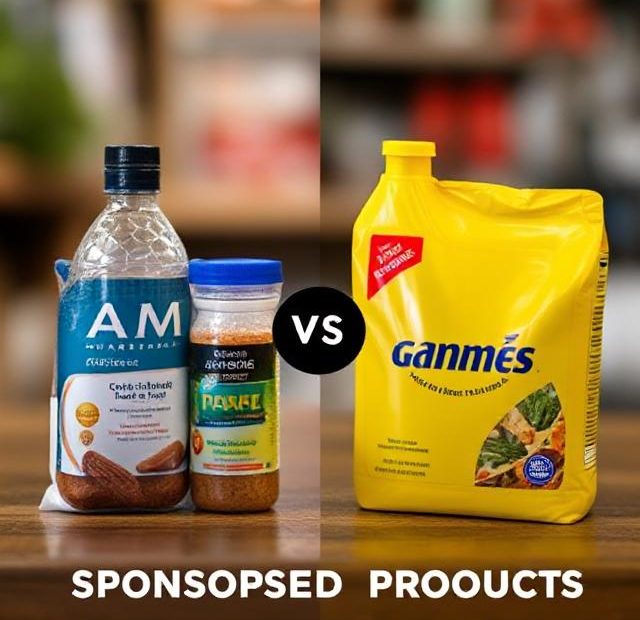If you’re advertising on Amazon, you’ve likely heard of both AMS (Amazon Marketing Services) and Sponsored Products. Though they often seem interchangeable, they actually refer to different tools and strategies within the Amazon advertising ecosystem.
Understanding the differences between AMS vs. Sponsored Products is critical to selecting the right approach for your brand, optimizing your ad spend, and improving your return on investment (ROI).
This beginner-friendly guide explains what each option offers, how they differ, and when to use them.
What Is AMS (Amazon Marketing Services)?
Amazon Marketing Services, or AMS, was the original name for Amazon’s self-service advertising platform. It has since been rebranded and merged into what we now know as Amazon Advertising or Amazon DSP (Demand-Side Platform).
However, the term AMS is still widely used—especially when discussing more advanced advertising options beyond simple keyword-based Sponsored Products.
Core ad types under AMS include:
-
Sponsored Brands (formerly Headline Search Ads)
-
Sponsored Display Ads
-
Video Ads
-
Amazon DSP (programmatic display and video ads)
AMS is designed for sellers, vendors, and agencies looking for broader visibility, off-Amazon reach, and enhanced targeting.
What Are Sponsored Products?
Sponsored Products are the most common and beginner-friendly form of Amazon advertising. They are pay-per-click (PPC) ads that promote individual product listings directly in Amazon search results and product pages.
When you search on Amazon and see a product labeled “Sponsored,” that’s a Sponsored Product ad.
Key features include:
-
Simple setup
-
Keyword targeting
-
Automatic and manual targeting
-
Control over budget and bids
-
Performance-based pricing (only pay when clicked)
Sponsored Products are a great way to drive traffic to specific listings and increase visibility, especially for new or low-ranked products.
AMS vs. Sponsored Products: Key Differences
Let’s break down the main differences between AMS and Sponsored Products:
| Feature | AMS (Amazon Marketing Services) | Sponsored Products |
|---|---|---|
| Ad Type | Sponsored Brands, Display, DSP | Product-based ads |
| Purpose | Brand visibility and reach | Product sales and rank |
| Audience Targeting | Interest-based, retargeting | Keyword and ASIN targeting |
| Placement | Homepage, product pages, off-Amazon | Search results and product pages |
| Budget Flexibility | Higher investment needed | Budget-friendly for beginners |
| Ease of Use | Advanced platform, learning curve | Easy to launch and manage |
Benefits of AMS Ads
-
🔥 Brand awareness: AMS ads like Sponsored Brands put your brand front and center, increasing recognition.
-
🎯 Advanced targeting: Use customer interests, shopping behavior, and demographics to refine reach.
-
🌐 Broader visibility: Reach customers off Amazon via DSP placements on third-party websites.
-
📹 Video ads: Stand out with engaging multimedia content in search and product pages.
Benefits of Sponsored Products
-
✅ Quick setup: Create ads in minutes with Amazon’s guided workflow.
-
💰 Lower cost: Great for small budgets or those just starting out.
-
🔍 High purchase intent: Ads appear in search results where users are actively shopping.
-
📈 Boost organic ranking: Increased clicks and sales can improve your product’s organic search visibility.
When to Use Sponsored Products
Sponsored Products are ideal for:
-
New sellers looking for immediate traffic
-
Product launches to build momentum
-
Filling ad gaps while your SEO rankings improve
-
Tightly focused promotions on specific items
Because of their ease of use and performance-based cost structure, Sponsored Products are the go-to entry point for most advertisers.
When to Use AMS Campaigns
AMS (or Amazon DSP) is best for:
-
Established brands with bigger budgets
-
Retargeting campaigns across and beyond Amazon
-
Promoting multiple products under one umbrella brand
-
Driving brand-level awareness instead of just sales
If you’re ready to scale your presence on Amazon and beyond, AMS provides the tools to do so.
Can You Use Both?
Absolutely—and you should. Running both Sponsored Products and AMS campaigns allows you to:
-
Cover the full buyer journey
-
Drive immediate conversions with product ads
-
Build long-term brand recall with display and video ads
-
Maximize real estate on Amazon’s platform
Start with Sponsored Products to drive early sales and gradually introduce AMS tools as your budget and experience grow.
Tips to Get the Most from Amazon Advertising
-
🧪 A/B test creatives and keywords to improve CTR
-
📊 Monitor ACOS (Advertising Cost of Sale) to maintain profitability
-
🎯 Use negative keywords to reduce irrelevant clicks
-
🛒 Optimize listings with great images, titles, and bullet points
-
🔁 Reinvest profits into scaling winning ad campaigns
Final Thoughts
When comparing AMS vs. Sponsored Products, there’s no one-size-fits-all answer. It depends on your goals, budget, and how experienced you are with Amazon advertising.
For beginners and smaller brands, Sponsored Products offer a low-risk, high-return entry point. For more seasoned sellers and those with multiple products or branding goals, AMS delivers wider reach and deeper audience insights.
Use both wisely—and watch your Amazon sales soar.
Also, you can learn more about Amazon PPC Strategy here.
